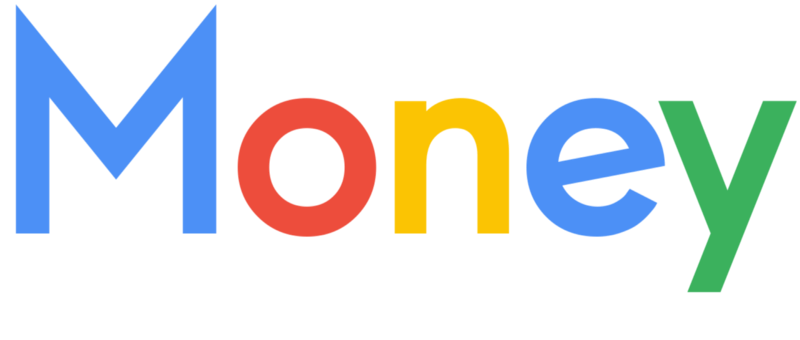We use Google products every day, may that be Google Maps, YouTube, Gmail, Android or simply Google Search. We have come to a point where it is actually really hard not to use at least one of these services even if we try and companies built to prove the opposite have failed miserably (RIP Cyanogen).
First question: where does the money come from?
But most of us have never actually paid for these services. How is this possible? Is it so easy for Google to create all of these things that they just give them for free? Of course not. It’s one of those cases that:
If you’re not paying for it, you’re not the customer; you are the product. — Andrew Lewis
So it’s not that you are not paying, it’s the way you’re paying. In Q4 2017 Google earned $31.91 billion, $27.27 of which are due to its ads business. That’s approximately 85.5% of all revenue. So the quick answer to our question is ads.
Next question: How?
Google’s ads business is divided into three main components: AdWords and AdSense, AdMob. AdWords is the software determining which ads will be presented in the Google webpage and AdSense publishes ads on other websites. For example if I own a cooking blog and I want to put some ads on it, I would just indicate the place where I want the ads to be and AdSense would do the rest. AdMob is the same as AdSense but for mobile applications.

-Ok that’s nice but I still don’t understand what’s my role into all of this.
The keyword is personalised!
For simplicity we’ll examine AdWords which is also Google’s biggest stream of income. What the search engine does first (and updates daily) is a process called web-crawling which is nothing more than creating a map of the web and honestly, it’s relatively easy; it just takes a lot of computers! So when you’re searching for a cheap hotel in Zurich (spoiler alert there aren’t any) you don’t actually search the whole web, Google only shows you the content that has already indexed and thinks that it’s relevant to what you’re searching for.
-How do they know what’s relevant? And how do they select which results or ads to show higher than others?
Aha! That’s the hard part, the part where you contribute.
The algorithm that took over 5 years to develop
To predict what you are searching for they use a machine learning algorithm that analyses your input applying natural language processing to really “understand” what you mean. Of course this algorithm has to be trained and besides content collected from the websites themselves, your data is what it’s trained with. Same applies for the normal results ordering. A simple example is that when you search for something and instantly click on the second result it shows them that it might be more relevant to your search query and might need to show up higher in a future search.
Where it gets really juicy is when it comes to showing and sorting ads. See, it’s not like in the TV where the enterprises have to pay a huge amount for their ad to be shown to everyone even if the majority of whom might not be interested in what they are selling. What Google offers and what makes it stand out of the competition is the ability to show personalised ads only to those people who actually care. My grandma might see 10 ads about the cool new “revolutionary” iPhone and she’s still not going to buy it but if you show the same ad to someone who is in the market for a new phone then it’s obviously a lot more effective.
Bid it to win it!
To decide which ads to show higher than others, besides the degree of relativeness, an ad auction is performed every time you search for something. The auction procedure is based on the Vickrey auction and called generalised second-price auction. I won’t get into the specifics and the math behind this, I will only mention that it’s a single round auction, the highest bidder wins but pays the second highest bid and it’s proved that the dominant strategy in a Vickrey auction is to bid the true value of your product (compared with a normal auction which happens in multiple rounds and the bid is the smallest possible).
Let’s take an example for clarification. Assume that me, Bob and Alice are hotel owners and we want to put an ad on Google. Also assume that we all have the same ad quality (we’ll get into that in a bit). If the suggested bid by Google is $1 and that’s the price that Bob and Alice bid but I bid $2 then I win, my ad will be shown first but I will pay $1 because that’s the second highest bid.
-Ok but frankly it doesn’t seem so different from the TV. I mean you pay for your ad to be shown but you have no idea if the user will actually notice it.
That’s why Google charges per click, you pay nothing as long as nobody clicks on your ad. And that’s where ad quality comes in, a variable determined by the number of clicks; more clicks equals better quality. This value is pivotal to the order of ad appearance and usually Google demotes bids for poor quality ads.
But at the end of the day you might ask, do all these justify the amount of money Google earns? Let’s do some quick math. There are approximately 450.000 searches for “cheap hotels” per month in the US and the suggested bid is $3.8. If half of those searches end up with a click to your ad then that’s $855,000 per month. And that’s only for one ad. Quite profitable I would say.
Conclusion
So to sum up, Google’s main income comes from its ads business and that’s heavily relied to data collected from its users. AdWords places ads on Google’s webpage while AdSense and AdMob show ads in collaborating websites and mobile apps respectively. The charges applied are per click and to determine the order that the ads appear an auction is performed between advertisers and the ad quality is also taken into account. And that’s how Google earns money, as simple as that.
By George Fotiadis
I’m a Computer Science student at EPFL interested in various topics like machine learning, applied data analysis and artificial intelligence to name a few. To learn more about me you can visit my personal website at gfotiadis.com.
If you liked this post you can follow me on Medium to get more stuff like this and if you REALLY liked it you can share it and #spreadItLikeMalware.



















